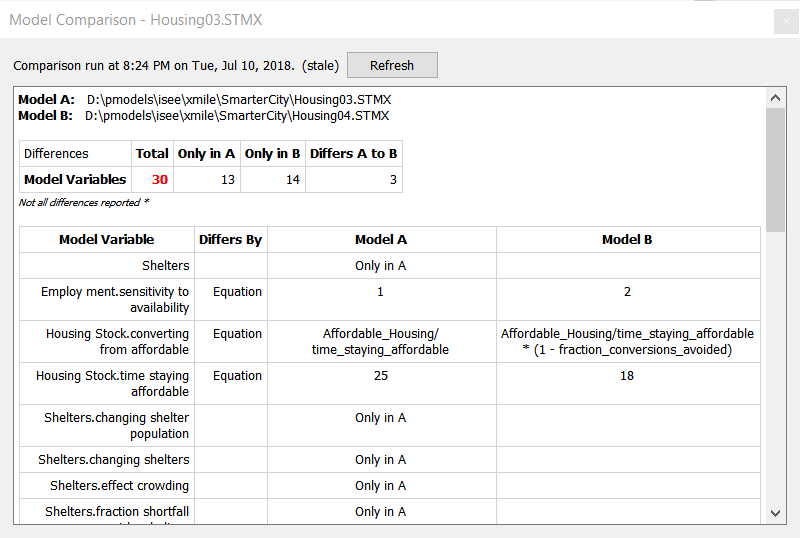
Use the Model Comparison dialog to compare the current model with another model you have saved (typically a different version of the model you have open).
To open the dialog select Compare With from the Model menu, then select the model you want to make the comparison with from the file selection dialog that opens.
The dialog that opens is a read only dialog that gives you information about the comparison.

Note The model comparison is based on the computational components of the model. It does not look at the appearance of the model diagrams, nor does it look at interface content.
You can keep the model comparison dialog open while editing a model. If you make changes after bringing up the dialog a button labeled Refresh will appear. Click on this to run the comparison again.
Note The current model will be compared to the model on disk. If you are editing the model on disk you will need to save it the close and reopen the model comparison dialog.
The dialog first lists the two models that are being compared, including the full path name. This is followed by a summary of differences and then more detail.
If two models are not different then you will see a dialog indicating that the models match.
This is a summary of the differences. This includes model variables that differ, as well as run specs or macro definitions that may differ. It shows the total number of differences, and then a breakdown by the categories described below.
This includes start and stop time, DT and integration method. Changes in Sim Specs do not change other parts of the comparison.
This lists any new or missing arrays, or any changes to their definitions. Depending on the type of change this can have a significant impact on variable comparisons. Equations that are apply-to-all will only be affected if the dimensions for any of the variables differ.
This shows differences in the definitions of user macros. These will be shown even if the macros are not used (so that the models might behave the same). If the macros are used, the equations using them will not be marked as different however. Determining whether the macros themselves are significantly different may require more detailed inspection.
This lists model variables that differ. It includes variables that are in one model, but not the other, as well as variables that differ by content. There are, of course, many different ways that variables can differ, including having different dimensions, different equations, and different units of measure. Some differences may stop checking for later differences.